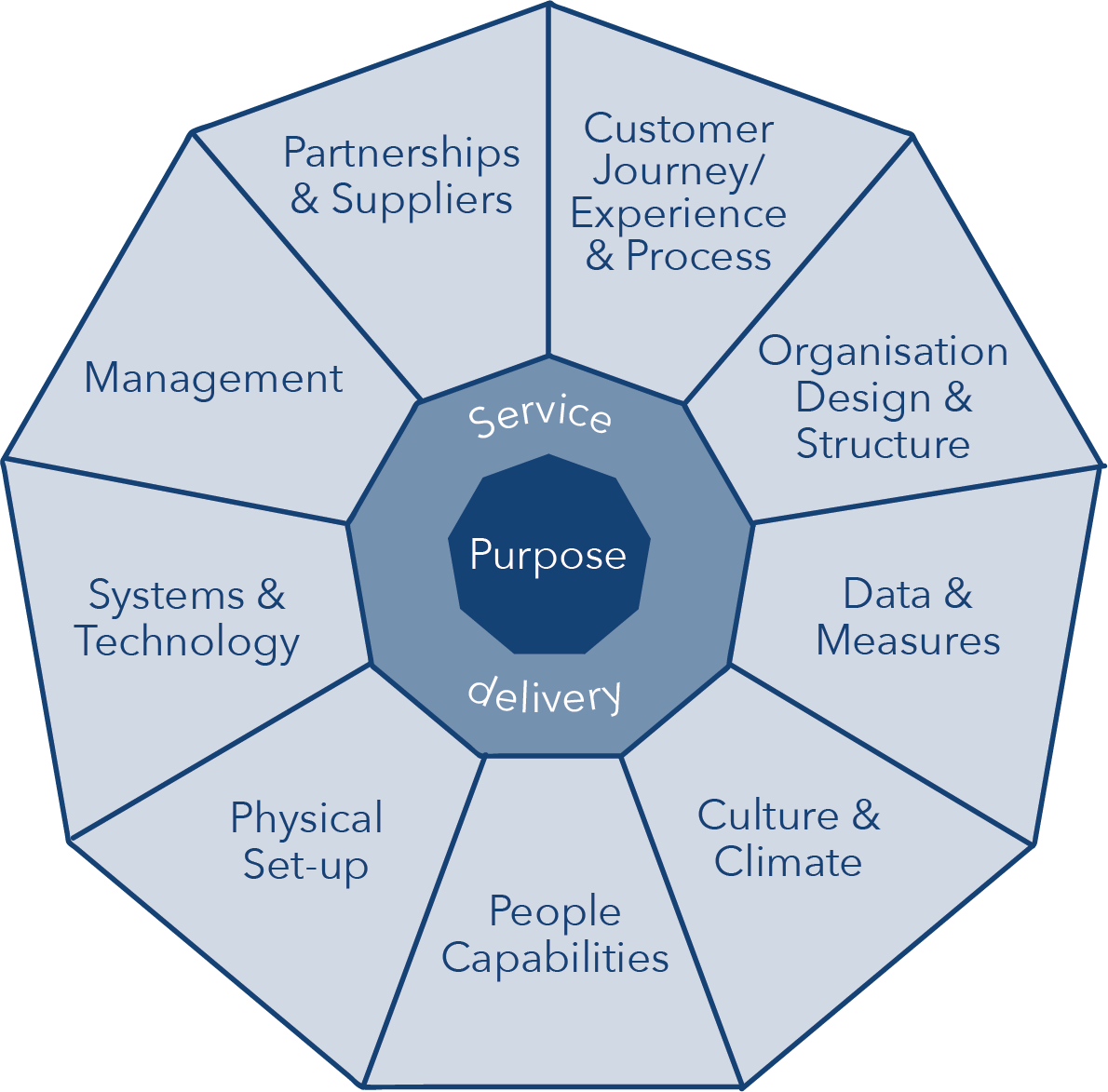What is a Target Operating Model?
Purpose above all
Are you clear on why your organisation exists? What its core purpose is? What is it that you’re ultimately trying to achieve and for whom? What is the need you’re trying to fulfil? Even if this is clear to you, have you clarified how the organisation can deliver that purpose? Meet our friend TOM.
What is a TOM?
TOM is an acronym for Target Operating Model. It’s a forward-looking picture of how your organisation will be set up at a point in the future, and how different components will come together to best enable you to deliver your purpose and ultimately achieve your vision. It provides internal and external stakeholders a framework and instruction for decision-making and guides all transformation activity. It does not itself provide the detail of what the changes are or how to make them; this journey is outlined by a road map and your transformation programme.
Designing an effective TOM
Far from being just a restructure, which is a mistake many make, there are several key areas that we recommend should always be covered when designing a TOM. The degree to which each is covered should be tailored to the organisation. The following diagram shows the key areas we design and denotes how they should be centred around your purpose the respective services that you need to deliver to achieve that purpose.
To be effective, a TOM needs to incorporate the voices of all levels within an organisation, but the responsibility of its design and accountability for delivering it sits with senior leadership team. It’s also important to note that designing a TOM is step one; it remains a concept until action is taken to implement it!
Stages for designing a TOM
The process for designing a TOM can be summarised as a six-stage process:
Clarifying your Purpose, Vision, Mission and Strategic Objectives
Understand how your current operating model (COM) aids and inhibits delivery of your purpose, and generate design principles for a new TOM
Create different operating model options, before selecting the ‘best’ one
Build in the necessary detail for the selected operating model (create your TOM)
Identify the actions needed to implement the TOM
Create a roadmap to communicate the journey and generate project mandates that can feed into your transformation programme.
Remember that this is the process for designing a TOM. The hard work comes after when you have to actually implement your TOM.
TOM outputs
The process of designing a TOM should result in the production of several outputs, each of which serves a purpose.
A new, better articulated, or reaffirmed purpose, vision, and mission – the drivers for any decision you make within the organisation.
A clear alignment of your strategic objectives to your vision – to ensure you are tactically doing things that will enable you to deliver your vision.
The top of a process hierarchy – to better equip you to manage processes, a prerequisite of process improvement.
A base of a performance framework – to support you to measure and manage performance better at all levels
An understanding of your current operating model – to understand why and how you need to change to improve.
An illustration of the TOM – to enable you to communicate the core changes in a way that is easier to understand and get behind
Commentary on the TOM – to provide the detail of the TOM’s design features
Narratives – to tell a story about what the TOM will mean for each group of stakeholders and generate the necessary buy-in.
A roadmap – to provide a high-level picture of the main changes and the journey the organisation is embarking on.
Project mandates – that can be used to shape all the change activity that needs to happen to deliver the TOM and will form or be incorporated into your transformation programme.
Implementing your TOM
Implementing a new TOM is in effect the journey and activities that will take you from your current operating model to your new TOM. This is rarely a quick process, usually taking years rather than a few weeks. This shouldn’t be a surprise as you usually need to be set up significantly differently if you want to achieve substantially different results.
Our advice is to understand the journey, plan well, and get on with it as there is rarely a better time to get started!
The three stages:
Clearly understand how you operate now and identify what needs to change (the gap analysis between the current and target operating model).
Produce an effective transformation plan to move from your current state to your target state. This must be realistic, factor in all change initiatives and consider business-as-usual pressures on your organisation. Take a look at our resources on Master Schedules for support on this.
Execute your transformation plan, monitoring, managing and improving continuously.
To recap, a Target Operating Model is a framework that articulates your organisation’s purpose and how that purpose will be delivered. This is the basis of your strategy which is then implemented. For help with designing and implementing your TOM, email hello@ad-esse.com.



